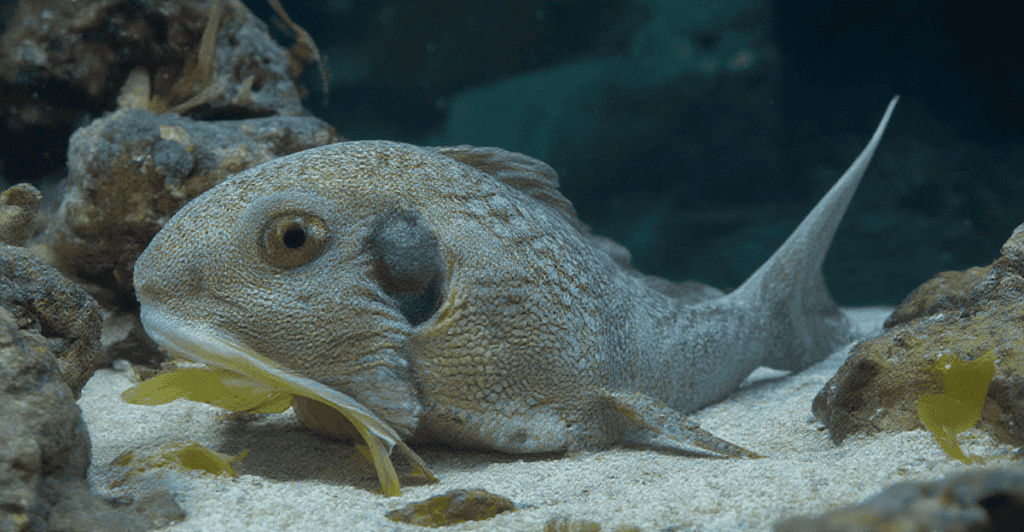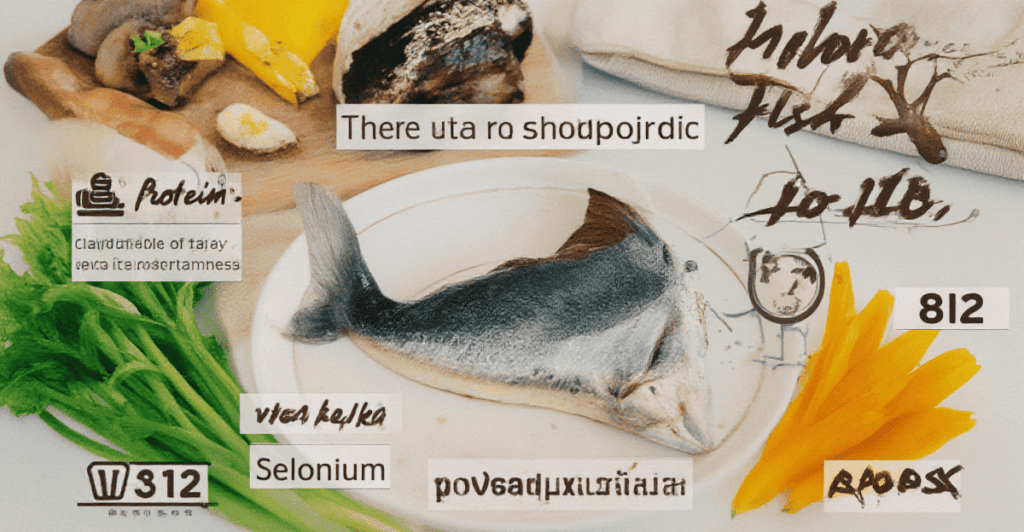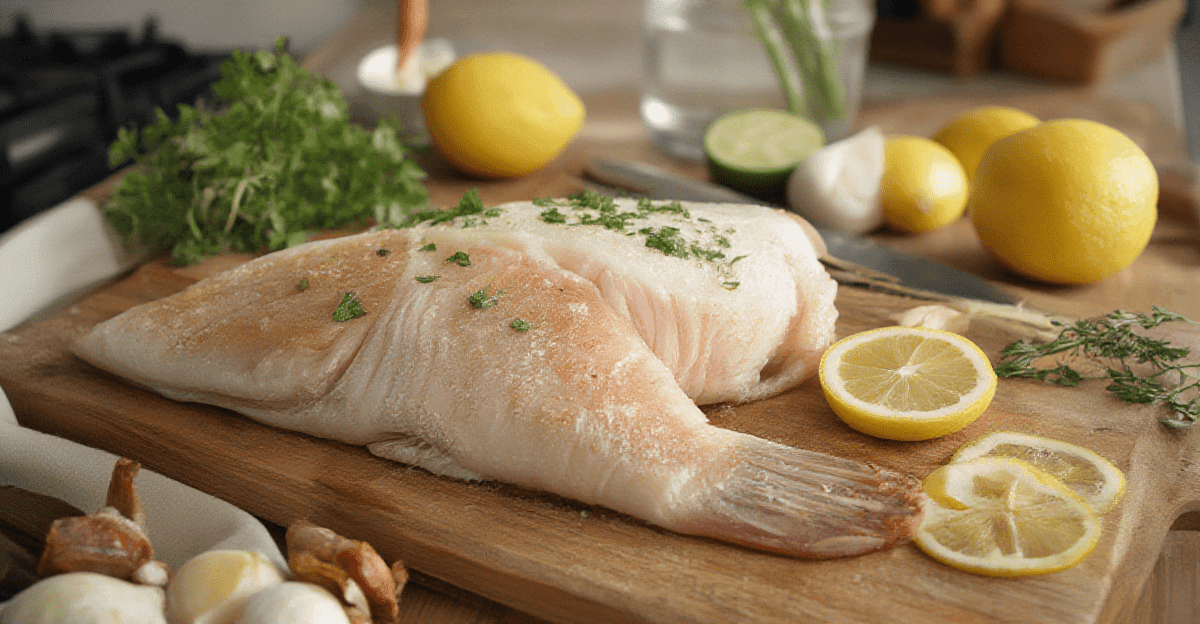Introduction
Monk fish, often referred to as the “poor man’s lobster,” is a fascinating marine species celebrated for its versatility in the culinary world. This unique fish, known for its firm texture and sweet, lobster-like flavor, has captured the hearts of chefs and food enthusiasts alike. Beyond its culinary appeal, Lophius plays a significant role in the marine ecosystem, thriving in deep ocean waters and contributing to biodiversity.
In this article, we will dive deep into the world of monk fish, exploring its origins, nutritional benefits, culinary uses, and sustainability practices. From selecting the freshest catch to preparing exquisite recipes, you’ll discover why Lophius has earned its place as a cherished ingredient in kitchens worldwide.
Let’s embark on this journey to uncover everything there is to know about monk fish, a true gem of the ocean.
What is Monk Fish?
Monk fish is a type of fish that lives in the deep waters of the Atlantic Ocean, Mediterranean Sea, and some parts of the Indian Ocean. It’s known for its strange appearance but delicious taste, which makes it a favorite in kitchens worldwide. Its scientific name is Lophius, and it belongs to a group of fish commonly called anglerfish. Although it may not win beauty contests, the Lophius is highly prized for its firm, white flesh, and sweet, lobster-like flavor.
Origin and Habitat

Monk fish are bottom-dwellers, meaning they live near the ocean floor. They are usually found at depths ranging from 50 to 1,000 meters. These fish are most commonly spotted in the North Atlantic Ocean, especially along the coasts of Europe and North America. Because Lophius prefer colder waters, they are abundant near places like Iceland, Norway, and the British Isles.
They are well-suited to their habitat, blending into their surroundings thanks to their flat bodies and large, camouflaged mouths. Monk fish are ambush predators, meaning they lie still and wait for prey to come close before striking quickly.
Distinctive Features of Monk Fish
At first glance, monk fish look quite unusual. They have large, flat heads that make up a big portion of their body. Their wide mouths are filled with sharp teeth, giving them a somewhat intimidating appearance. However, the part most people are interested in is the tail. The tail of the Lophius contains most of its meat and is considered a delicacy.
Another unique feature of Lophius is the small “lure” on top of their heads. This lure is used to attract smaller fish, making it easier for the Lophius to catch its prey. Their appearance may seem odd, but it’s perfectly suited to their way of life on the ocean floor.
Monk Fish Varieties Around the Globe
While monk fish are mostly associated with the North Atlantic, they are also found in other parts of the world. Different species of Lophius can be found in the Mediterranean Sea and Indian Ocean. Though their appearances may vary slightly, they all share similar traits: a flat body, a large head, and a meat-filled tail.
Interestingly, the term “monk fish” is sometimes used to describe different species of anglerfish, depending on the region. For example, in Europe, Lophius piscatorius is the most common type sold in markets, while in North America, another species may dominate. Regardless of the variety, their meat is prized for its versatility and unique flavor.
Nutritional Benefits of Monk Fish

Monk fish isn’t just delicious—it’s also packed with nutrients that make it a great choice for a healthy diet. Whether you’re looking for a high-protein meal or a food low in fat, Lophius checks all the boxes. Let’s explore the main nutritional benefits it offers.
Key Nutritional Components
Monk fish is loaded with essential nutrients that help your body stay strong and healthy. Here’s what makes it stand out:
- High in Protein: Monk fish is an excellent source of protein, which is important for building and repairing muscles. A single serving of Lophius can provide about 16-20 grams of protein, depending on the portion size.
- Low in Fat: If you’re watching your fat intake, monk fish is a great choice. It’s naturally low in fat, making it a healthy option for anyone trying to manage their weight.
- Rich in Vitamins and Minerals: Lophius is a good source of B vitamins, like B6 and B12, which support brain health and energy production. It also contains minerals like selenium, which helps protect your cells, and phosphorus, which is essential for strong bones and teeth.
- Low in Calories: Despite its rich flavor, Lophius is relatively low in calories, making it perfect for those who want a satisfying meal without overindulging.
Health Benefits of Regular Consumption
Including monk fish in your diet can bring several health benefits. Here’s how it helps:
- Boosts Muscle Health: Thanks to its high protein content, Lophius helps build and maintain muscles, which is especially important for active individuals and older adults.
- Supports Heart Health: Monk fish is low in saturated fats, which can help reduce cholesterol levels. Plus, it contains healthy omega-3 fatty acids that are good for your heart.
- Improves Energy Levels: The B vitamins in Lophius help your body convert food into energy, keeping you active throughout the day.
- Strengthens Bones: Minerals like phosphorus found in Lophius contribute to strong bones, helping to prevent conditions like osteoporosis.
- Protects Cells: Selenium acts as a powerful antioxidant, protecting your cells from damage caused by free radicals.
Comparison with Other Popular Seafood
Monk fish stands out even when compared to other popular seafood choices. Let’s see how it measures up:
- Monk Fish vs. Salmon: While salmon is richer in omega-3 fatty acids, Lophius has less fat overall, making it a leaner option. Both are excellent protein sources, so it depends on your preference.
- Monk Fish vs. Lobster: Monk fish is often called the “poor man’s lobster” because its taste and texture are similar. However, Lophius is much lower in cholesterol and fat, making it a healthier choice.
- Monk Fish vs. Cod: Cod is also a low-fat fish, but Lophius has a firmer texture, which makes it more versatile for cooking methods like grilling and pan-searing.
Monk fish offers an impressive combination of taste and health benefits, making it a great addition to any diet. It’s nutritious, versatile, and can be prepared in many delicious ways.
Culinary Uses of Monk Fish
Monk fish is a favorite ingredient in kitchens around the world, and for good reason. Its firm texture and slightly sweet flavor make it a versatile option for many recipes. Whether you’re grilling, baking, or frying, Lophius can be the star of any meal. Let’s explore its flavor, texture, and how it’s used in different dishes.
Flavor Profile and Texture
Monk fish is often compared to lobster because of its flavor and texture. Here’s why:
- Flavor: The taste of Lophius is mild and slightly sweet. It’s not overpowering, so it pairs well with a variety of seasonings and sauces.
- Texture: Its meat is firm and doesn’t flake easily, unlike fish like cod or haddock. This firmness makes Lophius perfect for grilling or searing, as it holds its shape well.
In short, Lophius is like lobster without the hefty price tag, which is why many people call it the “poor man’s lobster.”
Popular Recipes Featuring Monk Fish
Monk fish can be prepared in so many delicious ways. Here are some popular dishes you can try at home:
- Monk Fish Curry: Lophius works wonderfully in curries because its firm texture holds up well against rich, flavorful sauces.
- Grilled Monk Fish: Marinate the fish in olive oil, garlic, and herbs, then grill it for a smoky, tasty meal.
- Monk Fish Wrapped in Bacon: This dish combines the sweet flavor of Lophius with the savory taste of bacon, making it a crowd-pleaser.
- Monk Fish Stew: Add Lophius to a hearty vegetable stew for a comforting and nutritious meal.
- Pan-Seared Monk Fish: A simple dish where Lophius is seared in butter and garlic, creating a crispy outer layer while keeping the inside tender.
Monk Fish in International Cuisines
Monk fish is loved in many countries, and each culture has its unique way of preparing it. Here are a few examples:
- France: In French cuisine, Lophius is often used in “bouillabaisse,” a famous fish stew. It’s also served with creamy sauces or cooked in wine.
- Spain: Spaniards love Lophius in dishes like “suquet,” a Catalan fish stew made with potatoes, tomatoes, and saffron.
- Japan: Monk fish liver, called “ankimo,” is considered a delicacy in Japan. It’s often served as an appetizer in sushi restaurants.
- Italy: Italians prepare Lophius with pasta, using simple ingredients like tomatoes, garlic, and olive oil to let the fish shine.
Monk fish is incredibly versatile, making it a go-to ingredient for chefs and home cooks alike. Whether you enjoy it grilled, in a stew, or paired with bold spices,Lophius is sure to elevate any meal.
Sustainable Fishing Practices for Monk Fish
While monk fish is a tasty and popular seafood, it’s important to make sure it’s caught in a way that doesn’t harm the ocean. Overfishing and harmful fishing methods can affect the marine environment, so knowing about sustainable practices helps protect Lophius and their habitat.
Current Conservation Status
Monk fish populations vary depending on where they are found. In some regions, monk fish is caught in large numbers, which can put pressure on their population. Thankfully, conservation groups and governments monitor Lophius numbers to ensure they’re not overfished.
In many parts of the Atlantic Ocean, Lophius populations are considered stable. However, in areas where overfishing has occurred, efforts are underway to allow the numbers to recover. By following strict fishing regulations, fishermen can help maintain healthy populations.
Ethical Fishing Practices
Sustainable fishing practices are key to protecting Lophius and the oceans they live in. Here are some methods that make a difference:
- Using Selective Gear: Fishing nets designed to catch only Lophius while letting smaller species escape help reduce bycatch (unintended catch of other marine life).
- Setting Fishing Limits: Governments set quotas or limits on how much Lophius can be caught in a season, ensuring their numbers stay balanced.
- Seasonal Fishing: Catching monk fish during certain times of the year allows them to breed and maintain healthy populations.
By supporting fishermen who follow these ethical practices, consumers can enjoy Lophius without harming the environment.
Supporting Sustainable Fisheries
You can make a difference by choosing monk fish that comes from sustainable sources. Look for labels like the Marine Stewardship Council (MSC) certification when buying seafood. This ensures the fish was caught in an eco-friendly way.
Additionally, shopping at local fish markets and asking where the Lophius was sourced can help you make informed choices. By supporting responsible fishing, you contribute to protecting the oceans and ensuring Lophius remains available for future generations.
Sustainability matters not only for monk fish but for all marine life. With simple steps like choosing eco-friendly options and spreading awareness, we can enjoy delicious monk fish dishes while keeping the oceans healthy.
How to Select and Store Monk Fish
To fully enjoy the flavor and quality of monk fish, it’s important to know how to choose the freshest catch and store it properly. By following these simple tips, you can ensure that your Lophius stays delicious and safe to eat.
Tips for Choosing Fresh Monk Fish
When buying monk fish, freshness is key. Here’s what to look for:
- Check the Smell: Fresh monk fish should have a mild, clean smell like the ocean. If it has a strong or unpleasant odor, it’s best to avoid it.
- Look at the Flesh: The meat of Lophius should be firm and moist, not slimy or dry. If it’s fresh, the flesh will bounce back when you press it gently.
- Inspect the Color: Lophius meat is usually white or slightly pink. If it looks gray or discolored, it might not be fresh.
- Ask the Fishmonger: If you’re unsure, don’t hesitate to ask the seller when the Lophius was caught. Fresh fish is usually sold within one or two days of being caught.
Buying from a trusted fishmonger or store can also make a big difference in quality.
Proper Storage Techniques
Once you’ve chosen your monk fish, storing it correctly is the next step. Here’s how to keep it fresh:
- Refrigerate Immediately: Place the Lophius in the coldest part of your fridge as soon as possible. It should be kept at a temperature below 40°F (4°C).
- Use within 1-2 Days: Fresh Lophius is best enjoyed within one or two days of purchase. If you can’t cook it right away, consider freezing it.
- Wrap it Well: Wrap the fish tightly in plastic wrap or store it in an airtight container to prevent it from drying out or absorbing other odors from the fridge.
- Freeze for Longer Storage: To keep Lophius for a longer time, freeze it. Make sure to wrap it securely in freezer-safe bags or plastic wrap, and use it within three months for the best quality.
Common Mistakes to Avoid
Here are a few mistakes to steer clear of when handling monk fish:
- Don’t Leave It Out: Leaving Lophius at room temperature for too long can cause it to spoil. Always refrigerate or freeze it quickly.
- Avoid Improper Wrapping: Exposing the fish to air can make it dry and lose flavor. Seal it tightly to maintain its freshness.
- Don’t Overstore: Even when frozen, Lophius loses its flavor and texture over time. Stick to the recommended storage periods.
FAQs
Is monkfish a good fish to eat?
Yes, monkfish is a great fish to eat! It is not only delicious but also healthy. Monkfish has a firm, meaty texture and a mild, slightly sweet flavor, making it a versatile choice for many dishes. It’s also packed with protein, low in fat, and contains essential nutrients like vitamins B6 and B12, selenium, and phosphorus. These qualities make it a popular choice for people looking for a nutritious and satisfying meal.
What is monkfish called in the USA?
In the United States, monkfish is commonly called “anglerfish” or “goosefish.” While the term “monkfish” is widely used in markets and recipes, “anglerfish” refers to the same species in scientific and fishing contexts. However, when you see it sold in stores or on menus, it’s usually labeled as monkfish.
What does monkfish taste like?
Monkfish has a mild, clean flavor with a hint of sweetness. Its taste is often compared to lobster because of its richness and slightly sweet notes. The texture is dense, firm, and meaty, which sets it apart from flaky fish like cod or haddock. Because of its neutral flavor, monkfish pairs well with various seasonings, sauces, and cooking methods, making it a versatile seafood choice.
Does monkfish taste like lobster?
Yes, monkfish is often said to taste like lobster. In fact, it’s sometimes called the “poor man’s lobster” because it has a similar sweet flavor and firm texture but is much more affordable. While it’s not identical to lobster, monkfish is a great alternative for those who enjoy the taste and texture of lobster without the high cost.
Conclusion
Monk fish is truly a hidden gem in the world of seafood. With its unique flavor, firm texture, and versatility in the kitchen, it’s no wonder this fish is loved by so many. By understanding its nutritional benefits, sustainable fishing practices, and proper storage methods, you can enjoy monk fish in the best possible way.
Whether you’re preparing a simple pan-seared Lophius or trying it in an international dish, this seafood delight promises to impress. So, the next time you’re looking for something delicious and healthy, give Lophius a try—you won’t be disappointed!

